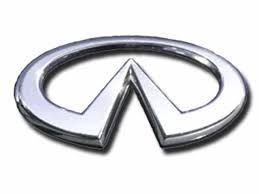FX50 AWD V8-5.0L (VK50VE) (2009)
/Page-312001.png)
Compression Check: Testing and Inspection
COMPRESSION PRESSURE
Inspection
1. Warm up engine thoroughly. Then, stop it.
2. Release fuel pressure. Refer to See: Fuel Pressure/Testing and Inspection.
3. Disconnect fuel pump fuse (1) from IPDM E/R (2) to avoid fuel injection during measurement.
4. Remove engine cover. Refer to See: Engine, Cooling and Exhaust/Engine/Service and Repair/Removal and Replacement/Engine Cover/Exploded
View.
5. Remove ignition coil and spark plug from each cylinder. Refer to See: Powertrain Management/Ignition System/Ignition Coil/Service and
Repair/Exploded View.
6. Connect engine tachometer (not required in use of CONSULT-III).
7. Measure compression pressure using compression gauge connected with flexible type adapter (commercial service tool).
8. With accelerator pedal fully depressed, turn ignition switch to "START" for cranking. When the gauge pointer stabilizes, read the compression
pressure and the engine rpm. Perform these steps to check each cylinder.
Compression pressure : Refer to "General Specification". See: Engine, Cooling and Exhaust/Engine/Specifications/General Specification
CAUTION:
-
Measure a six-cylinder under the same conditions since a measurement depends on measurement conditions (engine water temperature,
etc.).
-
Always use a fully changed battery to obtain the specified engine speed.
-
If the engine speed is out of the specified range, check battery liquid for proper gravity. Check the engine speed again with normal battery gravity.
Refer to See: Starting and Charging/Battery/Service and Repair/Procedures.
-
If compression pressure is below the minimum value, check valve clearances and parts associated with combustion chamber (valve, valve seat,
piston, piston ring, cylinder bore, cylinder head, cylinder head gasket). After checking, measure compression pressure again.
-
If a cylinder has low compression pressure, pour a small amount of engine oil into the spark plug hole of the cylinder to re-check it for
compression.
- If the added engine oil improves the compression, piston rings may be worn out or damaged. Check piston rings and replace if necessary. Refer to
See: Engine, Cooling and Exhaust/Engine/Cylinder Block Assembly/Service and Repair/Disassembly and Assembly.
- If the compression pressure remains at low level despite the addition of engine oil, valves may be malfunctioning. Check valves for damage. Replace
valve or valve seat accordingly. Refer to See: Engine, Cooling and Exhaust/Engine/Cylinder Block Assembly/Service and Repair/Disassembly and
Assembly.
-
If two adjacent cylinders have respectively low compression pressure and their compression remains low even after the addition of engine oil,
cylinder head gaskets are leaking. In such a case, replace cylinder head gaskets. Refer to See: Engine, Cooling and Exhaust/Engine/Cylinder Head
Assembly/Service and Repair/Disassembly and Assembly.
9. After inspection is completed, install removed parts.
10. Start the engine, and check that the engine runs smoothly.
11. Perform trouble diagnosis. If DTC appears, erase it. Refer to See: Powertrain Management/Computers and Control Systems/Testing and
Inspection/Scan Tool Testing and Procedures/Specification Value/Diagnosis Procedure.
